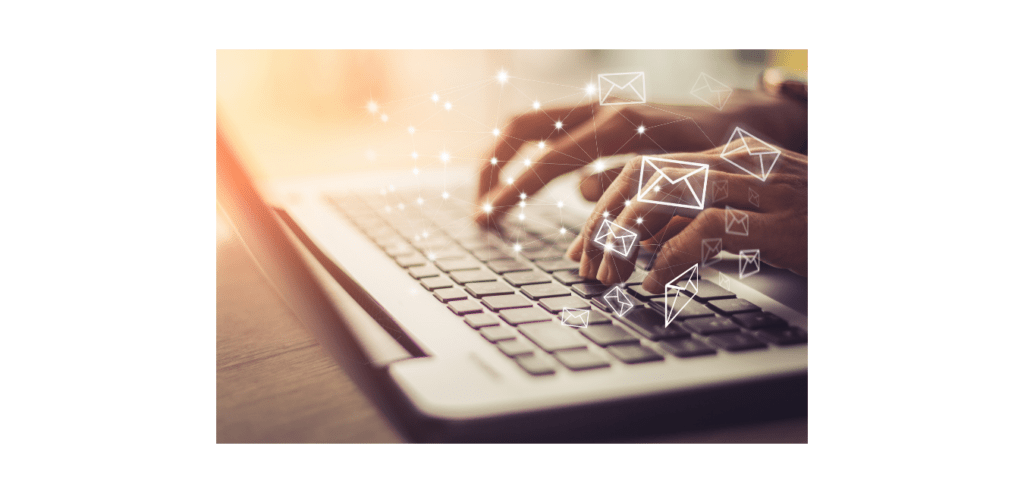Is your inbox out of control, and you feel like you are drowning in emails? Do you feel like you are wasting too many hours of your day trying to manage it all? Or do you ignore the emails because it is too overwhelming and you don’t have enough time in your day to handle it? If so, you’re not alone.
How Much Time Do You Spend In Your Inbox?
An Adobe survey of 1,000 American workers revealed that people spend an average of five hours per day checking their email! That’s approximately 25 hours per week, not counting weekends. That’s also about 108 hours per month and 1,300 hours yearly! And that is an average, so some are spending less time, but others are spending MORE time! No wonder we feel like we are drowning! We are checking email while working and on our vacations, while we are in bed, while we should have downtime with our family.
How To Spend Less Time In Your Inbox
If you want to get your inbox organized and running more efficiently, these tips will help you spend less time in your inbox and more time being productive or using that time for yourself. It may temporarily increase the time you spend until you get everything set up. But it will be well worth your time when your inbox is organized and less chaotic.
- Start by blocking off time in your schedule to focus only on your inbox. You can set time to do clean-up or time to read and respond only. Setting aside the time to work on your inbox will allow you to focus on your emails when the time is right and concentrate on your other work when you need to.
- Only check your inbox 2-3 times per day. As part of your time-blocking, designate specific times of day that you read and respond to emails. You can set up an auto-responder notice that will advise senders that you only check your email at certain times of the day and will respond to them within 24 hours or whatever you think is reasonable. If you are distracted by notifications, try turning off the notifications or shutting down your email entirely until it is the designated time to work on your inbox. It can take up to 30 minutes to refocus after you have become distracted!
- Make your inbox a clean slate. Now that you are in the habit of time-blocking to manage your inbox, it’s time to wipe out the old emails, so they are out of sight. You don’t have to delete everything. What you can do is make a folder labeled “old emails”. You can do large batches of emails and send everything to this folder for instant inbox zero. When you have more time, go into that folder and start deleting what you don’t need and managing what you want to keep or read.
- Make your inbox “things I need to work on” only. Anything related to current projects, invoices, etc., are things you will keep in your inbox. Follow this method and ask these questions when checking your inbox:
- “Can I delete this?” If so, delete it immediately.
- “Can I delegate this to someone else?” If the answer is yes, immediately forward the email to the person you have designated to handle the email.
- “Can this be filed?” If you cannot delete it or delegate it, drag and drop the email into a designated folder where you will store it until you need it. This could be meeting notes or other references that you want to keep for some time but do not need to see in your inbox.
- “Will this take longer than two minutes?’ If so, then leave it in your inbox until you have more time to complete this pending item. Move on to the next thing to quickly manage your incoming emails during your time-block.
- Set up folders to sort and save your email. You can create as many folders as you need. You should have your “old email” folder until you have handled all of them, then you can delete that folder. Create folders for newsletters you want to save and read later, meeting notes and references you want to refer back to, projects that you are not currently working on but would like to keep the work for a period of time in case it needs to be referenced later. It’s also an excellent idea to create a folder for each client so you can keep any saved emails in that client folder. You can create subfolders within folders and assign colors if you want. This is called email triage.
- Cut off junk mail at the source. Start unsubscribing to emails from retailers, newsletters that you no longer want to see (a good indication is if it’s been months since you last read one), and any other repetitive email that is clogging up your inbox.
- Save Even More Time On Your Inbox With A Virtual Expert ®. If you think that this all sounds wonderful, but you don’t have time to clean out your email, set up folders, and all of the tips shared in this blog post, then you should consider hiring a Virtual Expert ® (VE). A VE who offers email management is a valuable asset to your business. Your VE will check your inbox for you, respond to those emails that you delegate, and alert you to high priority emails that need your immediate attention. Your VE can also set up folders, organize your inbox, unsubscribe to your subscription lists, and clean out your trash and spam folders. Hiring a VE will save you the most amount of time so that you only see the emails that you need to see and not wasting time on ones you don’t need to see.In what ways can a VE help save you from drowning in your email chaos?

